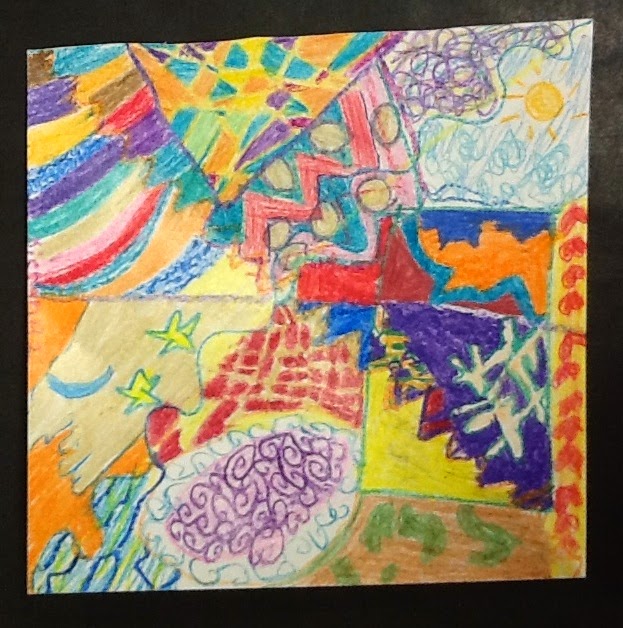In my recent presentation for the NAEA Virtual Conference, held September 27-28th, 2014, I shared different scenarios for TASK at the elementary level. In this scenario, we are demonstrating how the same constraints can create diverse outcomes with different artists. Here is the TASK, presented to my 3rd grade students: (I read it to them as they applied the constraints to their work, then posted it)
1. Draw a wavy line from edge to edge
2. Draw a zigzag line from edge to edge
3. Draw a straight line from edge to edge
4. Draw a circle
5. Draw a square
6. Draw a triangle
This exercise is one many of us have used to determine our students' understanding of vocabulary, and application of concepts in their work. Here I am using it to demonstrate to them how we can all interpret information in different ways, and conceptualize ideas for divergent outcomes. We are also using it as part of a bigger project, for our Pinwheels for Peace event!
In progress work:
How do you help students understand what the expectations are?














No comments:
Post a Comment